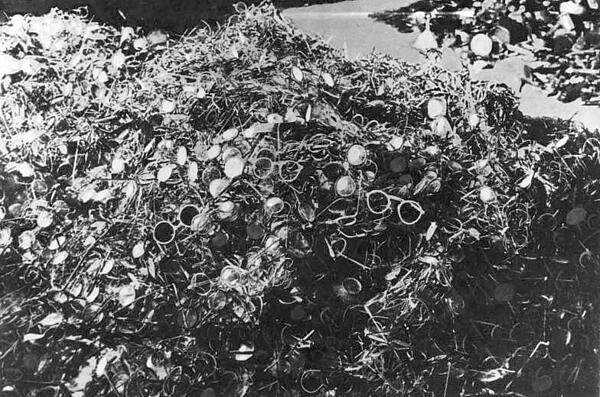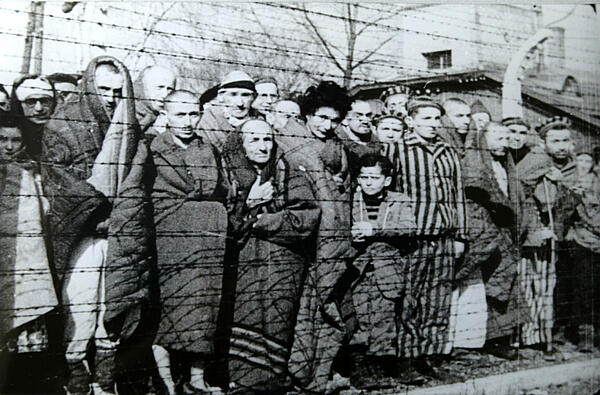Auschwitz-Birkenau
Auschwitz-Birkenau was the network of Nazi concentration camps built in Poland during World War Two. The site became the location for the mass murder of Jews in Hitler’s plan for the “Final Solution”. It is estimated that over 1 million Jews were murdered at Auschwitz.
Auschwitz was initially opened in 1940 to house Polish political prisoners. It was in April that year that Rudolf Höss, a captain in the SS, travelled to Poland to create the new concentration camp at Auschwitz. Upon his arrival, Höss, who was experienced in camps of this kind having worked in concentration camps since 1934, found an old barracks, with many of the building in a state of disrepair. But they would still serve the purpose of housing the Polish political prisoners: 10,000 of them to be precise.
The main camp at Auschwitz - known as Auschwitz One - was poorly resourced when Höss arrived and the loyal Nazi leader found himself having to travel around the olca area to find the equipment needed, including things like barbed wire. The lack of interest in Auschwitz from Berlin meant that Höss and the 300 SS men he commanded there could do largely as they pleased.
The Poles that were sent to Auschwitz were subjected to horrifying conditions - half of the 23,000 who went to the camp died within 20 months.
Auschwitz was located in an area rich in lime, fresh water and coal, which in turn peaked the interests of major German industrial firm I G Farben. This prompted the huge expansion of Auschwitz. Höss was subsequently ordered to triple the size of Auschwitz to 30,000 prisoners by SS Reichsfűhrer Heinrich Himmler, with all the prisoners to be sent to work gathered these natural resources.

A separate town was created near the camp so senior Nazi members could visit Auschwitz and monitor progress.
However, Operation Barbarossa would change the way Auschwitz was run yet again. The German attack on Russia in June 1941 resulted in many Russian soldier being taken as prisoners of war, many of whom ended up at Auschwitz where they were subjected to even worse treatment than the Poles.
Auschwitz also played host to members of the SS who were involved in the murdering of physically and mentally people handicapped in Germany. Himmler wanted the euthanasia of the handicapped to be extended to the concentration camps.
Previously, civilians were executed by fire squad. However, there was concern that this was zapping morale from the SS officers. Himmler ordered new methods to be investigated.
There were two original ideas from the SS of how to make the murder of people in the concentration camps more efficient. The first was to put prisoners into a building and then blow it up, but this was seen as too costly and too messy. The second was to lock prisoners in a room and pump it full of fumes from car engines, but this was seen to slow.
But the second idea did give birth to a different solution; an officer at Auschwitz, Karl Fritsch came up with the idea of using Zyklon B gas for the purpose of mass murder. He experimented with Russian POWs. Windows and doors were sealed up, locking the POWs into a bloc of cells. The gas was then pumped into the building, killing all the prisoners.
The first mass executions of Jews happened at an extermination camp in Chelmno. The work done at Chelmno was small-scale and essentially ad hoc to start with. Gas vans were used at Chelmno, which were slow and could only deal with a small number at a time. The Wannsee meeting changed all of this. Its impact on Auschwitz was huge.
The Wannsee meeting took place on 20 January 1942 and was concerned with finding a solution to what was called by the Nazi party as the ‘Jewish Problem’. Reinhard Heydrich chaired the meeting while Adolf Eichmann took minutes, and the minutes from the meeting show how the Nazis wanted to make all the Jews in Europe work until death within these concentration camps and for those who were unable to work to be dealt with ‘appropriately’. This is what would become known as ‘The Final Solution’.

With Auschwitz One deemed too close to other inhabitants a second, more remote camp was designed a mile and a half to the north west. The second camp was called Auschwitz-Birkenau and could hold 100,000 prisoners, tightly packed into barracks. It was originally intended for Russian POWs rather than Jews; in October 1941, 10,000 Russian POWs arrived at the new camp and six months later just 200 of these were still alive.
Documents shows that Höss had no idea that Auschwitz was to be used for Jews, thinking it was purely for Russian POWs. However, before long this was to change; the Nazi’s purchased 60,000 Slovakian Jews from the Slovakian government for 30 million Reichsmarks - these were soon sent to the death camp.
It was on 29 April 1942 that the first Slovak Jews turned up at Auschwitz. Upon arrival they were taken to two new gas chambers -known as the ‘Little Red House’ and the ‘Little White House’ - where they were gassed and killed, with their bodies buried in giant pits. It was the beginning of the mass murdering that Auschwitz is synonymous with today.
With just the two small cottages, operations had to become factory-like, with more and more Jews being sent to the camp all the time. One of the main issues that Höss faced at Auschwitz was what to do with all the dead bodies. At first they were buried in fields but this proved hard work in the summer months and used a lot of land, so instead they were stacked between layers of wood and burnt.
Auschwitz was profitable for Nazi party, making them £125 million profit, in modern day terms. When people would arrive at one of the 45 sub camps they would be stripped of all their possessions while after they were dead people known as the Sonderkommando who go around the bodies and remove any gold teeth.
It wasn’t just Jews and Russian POWs that found themselves at Auschwitz, though - the camp also held gypsies from across Eastern Europe. Also viewed as subhuman by the Nazi party, around 23,000 gypsies were sent to Auschwitz and on 2 August 1944, 21,000 of them were killed in the gas chambers, with many others dying from the shocking conditions.
By May 1944 as many as 10,000 people were killed in Auschwitz every day. It is often questioned why the Allies, who had been informed about the camp and others like it, did nothing to bomb them - putting people out of their misery while also preventing future deaths in the facilities - or at least bomb the railway lines that were used to transport people there.
Auschwitz was finally in January 1945 when Russian troops came to the camp. Less than 6,000 prisoners were alive in the camp, with those found being the people who were too weak to join the other 60,000 who had been forced out on a death march a few days before.
Höss and Eichmann were executed for war crimes in 1962. However, 90 per cent of the Auschwitz guards escaped punishment.
See also: Memories of Auschwitz
MLA Citation/Reference
"Auschwitz-Birkenau". HistoryLearning.com. 2024. Web.
